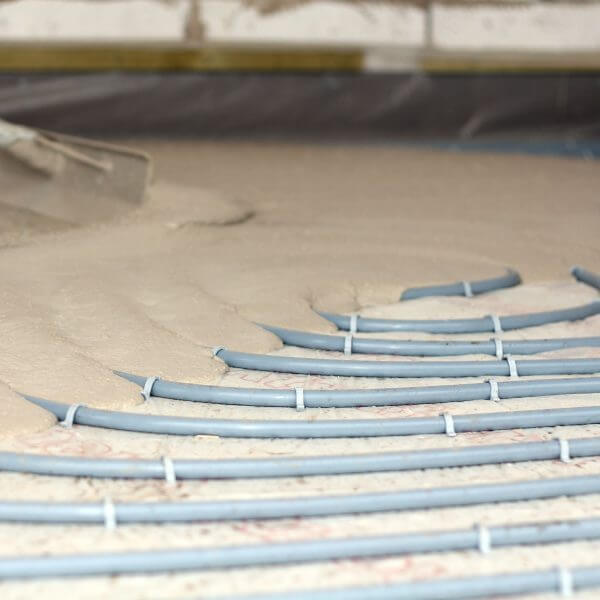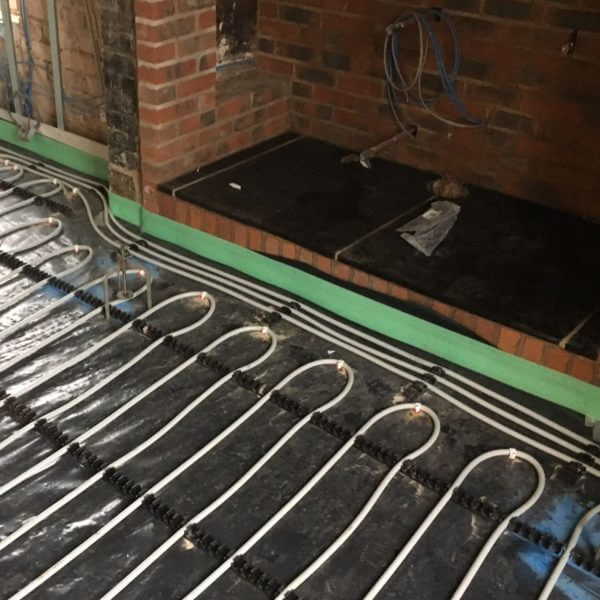Can Underfloor Heating be Installed in Wet Rooms and Bathrooms?
Heated bathrooms and wet rooms are growing as a renovation trend in home design. It’s easy to understand why, walking on cold tiles in the morning isn’t a pleasant sensation, while walking barefoot on warm tiles can feel luxurious.
Read on, and we’ll discuss how you can achieve tiled underfloor heating in your bathroom.
Can Underfloor Heating be Installed in a Wet Room?
Yes! Underfloor heating for bathrooms and wet rooms is possible and well worth the investment. Not only is it very comfortable to walk on warm tiles, underfloor heating for bathrooms helps reduce damp and mould issues. The heat helps encourage water to evaporate, and keeps the room at a temperature that inhibits mould or mildew growth.
Can You Install Underfloor Heating in a Bathroom on a Suspended Floor?
It’s a common misconception that wet underfloor heating can only be installed on concrete floors. At EasyFlow, we have developed a means of installing underfloor heating for suspended wooden floors.
The same goes for wet rooms, these can also be installed on suspended wooden floors. As long as the joists can take the additional weight, you can enjoy tiled underfloor heating in a wet room on any elevation of your home.
How to Install Underfloor Heating in A Wet Room
The most important step is the design – both of the wet room and the underfloor heating layout. You must be certain on the placement of your shower and your drains, and be confident that these are adequate to prevent stagnant or slow water flow.
We would highly recommend consulting in the design phase to ensure your drains don’t block access the underfloor heating pipes need, whilst ensuring you have adequate drainage.
You should also choose a flooring optimal for tiled underfloor heating. Ceramic and stone tiles are best for heat transfer. If you are instead choosing vinyl or linoleum flooring for your wet room, it must be suitable for use with underfloor heating.
Your drain and waste water pipes will need to be installed first, and you will need to remove the original screeding prior to this. Once the drains have been installed, the underfloor heating installation can go ahead as normal. This will be covered with liquid screed and, once sufficiently dried, the remainder of the wet room installation can continue.
Installation Considerations
When you are getting underfloor heating for a bathroom installed, there are some things to keep in mind to ensure that you are happy with the final result and aren’t paying for costly repairs.
Avoiding Cracks
Tiled underfloor heating is at risk of cracking if you don’t install your floor finishing properly. When laying your tiles, you should use preparations and adhesives specifically formulated for use with underfloor heating. These are more flexible and allow the tiles to naturally expand and contract without cracking when the temperature changes.
Waterproofing
With any wet room or bathroom, it is important to ensure that water doesn’t penetrate from the floor finish through to the screed or suspended wooden floor. When too much water is absorbed, it may cause excessive shrinkage, cracks or create pockets of damp.
Choosing a Quality Installer
No matter how many how to install underfloor heating tutorials you watch, the process of creating an optimal, long-lasting setup isn’t for the casual DIYer. Install the pipes too close to each other, and you will create hotspots that crack your tiles. Too far apart, and you won’t feel the benefit over the expense.
Getting an installer highly experienced in the design and installation of underfloor heating is essential. Call or email Easyflow for a free no-obligation consultation and we will help advise you on your bathroom renovation project.




Where To Find Us